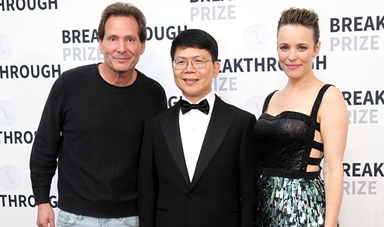Loading component...
At a glance
By Drake Bennett and Julie Verhage
In late 1999, a young computer scientist named Max Levchin started receiving emails from strangers about a web demo he’d created to illustrate the workings of an app.
The app, which he’d also helped create, was an encrypted payments platform for the state-of-the-art mobile device of the day, the PalmPilot.
Two users would agree to the transaction, the sender would enter their credit card number into their device, and once both PalmPilots were physically plugged into their owners’ computers, the appropriate amount would be debited from one and credited to the other.
“It was fairly clunky,” Levchin concedes, “but it was a full-loop way of transferring money.”
The app was the fourth or fifth pivot for his start-up, and it grew out of conversations with another co-founder, a lawyer and venture capitalist named Peter Thiel, with input from a board member named Reid Hoffman. They decided to call the app PayPal.
Considering most people didn’t own a PalmPilot, Levchin also created an online simulation of the app that allowed someone sitting at a computer to enter financial information and actually send someone else money.
“I thought of it as, ‘if you’re deciding whether to get a PalmPilot, here’s one way of enticing you’, ” Levchin says.
But the people emailing him had no interest in PalmPilots. They wanted to buy and sell stuff on the internet. eBay sellers had happened upon the demo and noticed that, in mimicking the Palm-to-Palm transfer, Levchin had incidentally created a working web payment tool.
At the time, eBay payments were still cheques in the mail, but if eBayers included a link to Levchin’s demo in their auction pages, they could pay one another instantly with a mouse click.
"There's lots of room for a lot of companies to be very successful, and there isn't going to be one company that does all of this that's never been the case in the history of the world."
Levchin wanted nothing to do with it. To him, “e-commerce”, as people were starting to call it, seemed both silly and dangerous.
“I felt that there was too much fraud taking place on eBay – and frivolous purchases. People selling Pez dispensers to each other,” he says.
“That’s just not the business I wanted to be in.” He ignored the emails.
Fortunately for him, Levchin was fighting a losing battle. Thanks to the internet, collectors and hobbyists all over the world could now find one another to traffic in rare toys, first editions, and other esoteric objects of desire.
Levchin’s demo was the first reliable, speedy way to settle transactions in this exploding global cyberbazaar. The sellers started linking to his demo without his permission.
When he resorted to sabotage, blocking the PayPal logo from loading, they simply took a screenshot and embedded that. It was only a matter of time before the demo became PayPal’s actual product.
“At some point I sort of quit trying to stop the eBay users and mostly focused on figuring out how to not lose money,” Levchin recalls.
When PayPal Holdings Inc. went public in 2002, it was processing 295,000 payments per day, worth US$16.2 million. It pioneered identity verification measures and provided recourse for buyers and sellers who got scammed. The brand became synonymous with online payments far beyond the world of candy dispenser obsessives.
Its reputation, however, was also hitched to that of eBay, which purchased the payment processor months after its initial public offering (IPO). As a result, PayPal’s image has been fixed in a sort of early-internet amber.
The company remains better known for the subsequent adventures and misadventures of the men who started it, all of whom have since left.
Levchin is a venture capitalist and runs an instalment payments start-up called Affirm. Despite being a product of the bygone era of the PalmPilot and the first internet boom, PayPal has managed to grow, acquire and negotiate itself into a position as one of the biggest players in global payments.
Now independent of eBay, PayPal has a market capitalisation of US$100 billion, 100 times what it was worth when it went public in 2002, and the number of users has grown from 15 million to almost 250 million.
While it’s struggled in China, where WeChat dominates payments, in the rest of the world it processes as much as 30 per cent of all e-commerce transactions, according to some estimates.
Digital payments are far bigger than they were when e-commerce meant eBay auctions – globally, shoppers spent almost US$3 trillion online last year.
Today there are smartphone “wallets”, online-only banks and iPad cash registers. PayPal plays a role in all of them.
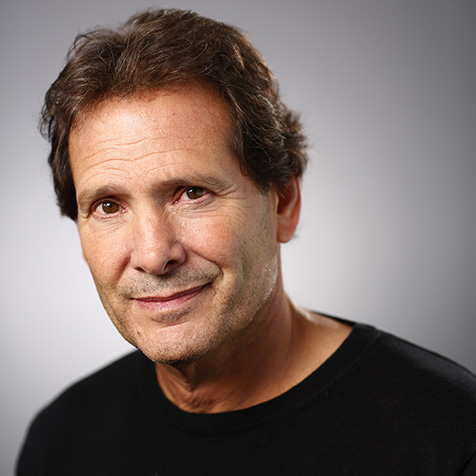
It owns Venmo, the “social payments” app, and Xoom, a digital money transfer service used to send money abroad.
It processes payments for Uber. It even offers small business loans. The company’s ambition, chief executive officer Dan Schulman intones, is to be “the operating system for digital commerce”.
There are others with that same ambition – large, powerful corporations competing to extract a few fractions of a cent from the thousands of transactions flying around every second.
It’s not only financial companies such as Visa and JPMorgan Chase, but tech Goliaths including Apple, Facebook, Amazon and Google. Chinese giants Alibaba and Tencent are also eyeing this market.
PayPal is thriving in this tricky environment because it’s managed to reinvent itself as much more than just an internet check-out button.
It’s a partner to tech companies eager to move into finance and financial institutions eager to move online.
As much as any other company, PayPal has helped create a world where people feel increasingly comfortable spending their money in anonymous online transactions.
In the late 2000s, almost a decade after it first went public, PayPal was drifting towards obsolescence and consistently alienating the small businesses that paid it to handle their online check-out.
Much of the company’s code was being written offshore to cut costs, and the best programmers and designers had fled the company. The result was a slow site whose rickety infrastructure made updates and new features laborious and rare.
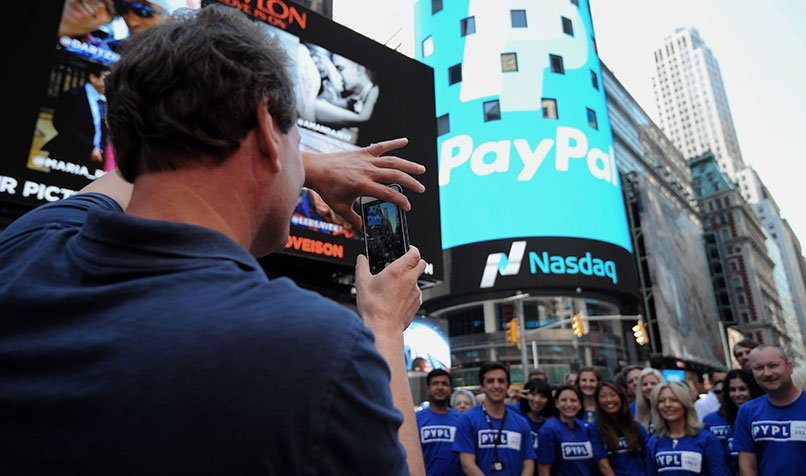
Companies that would otherwise have leapt to incorporate the PayPal button on their sites despaired of figuring out how to work with its technology.
To make matters worse, PayPal’s heavy-handed approach to fraud prevention meant that it routinely declined legitimate payments, costing its merchant customers business.
In addition, its customer service could be Kafkaesque.
In one notorious incident, an eBay seller reported that a buyer who’d disputed the authenticity of an antique violin she’d sold him was instructed by PayPal to destroy the instrument to get his refund – he did, sending photos of the shards.
The turnaround started with David Marcus, a French-born entrepreneur who came to eBay when it bought his mobile payments start-up in 2011. He’d been there less than a year when he was asked to run PayPal, and he quickly set about rebuilding the software platform, replenishing the ranks of programming talent, and softening the corporate wariness about disputes and suspicious transactions.
He invited customers to tweet their complaints to him. He also began to push the digital payments processor into new markets.
He oversaw the development of PayPal Here, which uses a plastic card reader that plugs into phones and tablets, turning them into digital cash registers. (The idea was pioneered by Twitter co-founder Jack Dorsey’s other company, Square.)
In 2013, PayPal bought Braintree Payment Solutions, which processes the credit card transactions on the mobile apps of Uber, Airbnb, StubHub, and thousands of smaller businesses. The acquisition brought in an influx of programmers and designers, as well as Venmo, which Braintree had acquired the year before.
Venmo is a way to quickly settle small debts between friends – a dinner bill, a get-well present for a colleague. With Venmo, informal financial interactions formerly governed by social norms about reciprocity, forgiveness and passive-aggressive hinting could be easily recorded and quickly paid. (“I only have a twenty” is no longer a viable excuse.)
You could even “bill” your friends. The app – complete with a feed of the payments your friends have made to each other – has proved enormously popular with millennials.
With the acquisitions and new products, PayPal’s revenue growth began dramatically outpacing that of its parent company, and eBay transactions made up a smaller and smaller part of its business.
In January 2014, the activist investor Carl Icahn, looking to profit off that divergence, began publicly agitating for a split.
Announcing that he owned almost 1 per cent of eBay, Icahn suggested in his usual splenetic tone that the payments business would grow even faster – and better reward its shareholders – if it were unyoked from eBay.
The argument was persuasive. On 30 September 2014, eBay CEO John Donahoe announced that the two companies would separate. In the midst of the turmoil, PayPal lost Marcus, who was lured away by Mark Zuckerberg to lead Facebook’s push into mobile messaging.
Schulman was hired to guide PayPal through the split and into independence. A serial executive, he’s spent his entire career in corporate management – at AT&T, Priceline, Virgin Mobile and American Express.
He has a raspy voice, an athletic slouch and since he’s a tech CEO, a personal uniform – in his case crew-neck sweaters, tight stonewashed jeans, and ostrich-skin cowboy boots (on some days, thongs).
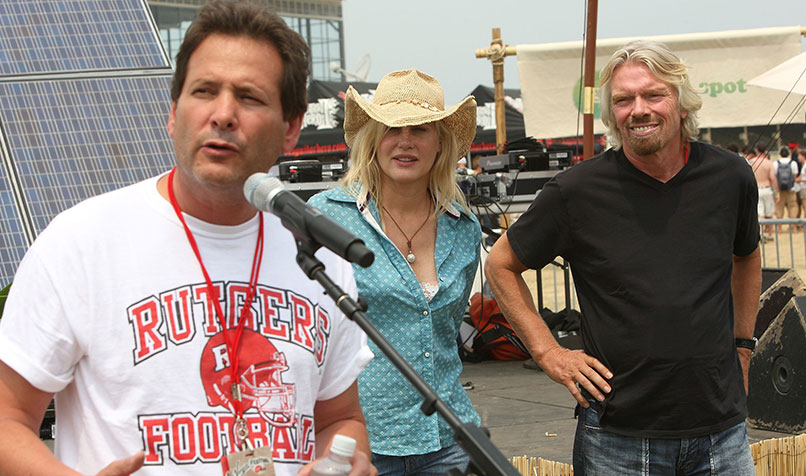
The former captain of his suburban New Jersey high school tennis and lacrosse teams, he practises Krav Maga, an Israeli self-defense system distinguished by its no-nonsense focus on brutal incapacitation rather than grace.
When he’s in New York City, Schulman works out at a boxing gym near PayPal’s office in the West Village. On a flip-flop Monday in September 2018, a few hours after his early-morning pugilism, he settled in at the end of a conference table to extol the unexpected power of partnership.
The primary concern investors had as Schulman took over was that the credit card companies would crush PayPal, despite its chief executive’s certified street-fighting skills.
PayPal had actively steered its users away from using credit cards to fund payments – the default option in its online check-out was a bank account, and it was cumbersome and confusing to change.
This was by design. The company’s basic business model, then and now, is simple. Each time a consumer clicks on its digital button to pay a merchant, PayPal charges the merchant about 2.75 per cent of the total purchase price.
When a consumer funds that transaction with a credit card rather than the user’s bank account, PayPal is forced to pass along most of that fee to the bank listed on the card (which then turns over a percentage to Visa or Mastercard).
For consumers, the difficulty of using credit cards on PayPal was an annoyance, but for payments companies, it was a threat. In the US, retailers pay US$90 billion every year for payment processing, making Visa and Mastercard fantastically profitable. Visa, whose network processes US$10 trillion in debit and credit transactions annually, was particularly frank in its hostility to PayPal.
“Anyone that’s trying to take your customers and disintermediate you is not a friend,” CEO Scharf said at a May 2016 tech conference. Visa would love to cooperate with PayPal, he insisted.
“The other door is where we go full steam and compete with them in ways that people have never seen before.” Visa and Mastercard threw resources into developing PayPal-killing digital payment platforms of their own.
Schulman, however, opted for the outstretched hand of friendship rather than the Krav Maga hammer fist of open competition. Only a few weeks after he took the job in September 2014, he and Scharf went to dinner, and they started meeting frequently.
On 21 July 2016, Visa and PayPal announced a deal in which the latter agreed to stop steering consumers away from the former and to share more data about what cardholders were buying with PayPal. Visa, for its part, agreed to stop threatening to destroy PayPal.
Over the next six months, Schulman negotiated similar partnerships with Mastercard and Citibank, committing to make it as effortless as possible for customers to use Citibank-issued credit cards and Mastercard’s network.
“When PayPal first spun out of eBay, there was a lot of competition and a lot of negative sentiment,” says Heath Terry, an analyst who covers the industry for Goldman Sachs.
“Basically, in 18 months on the job, Dan was able to completely change that narrative.” As with the Visa deal, PayPal was forgoing some profit but placating powerful and formerly antagonistic payment incumbents.
Citi and Mastercard – along with Google, Apple, Amazon and Samsung, each of which has an eponymous “pay” product – began steering customers to link their accounts with PayPal, seeing it not as a competitor, but as a driver of transactions and the fees they generate. In short, as a pal.
The result has been a surge in growth. “It took us 14 years to go from 50 million subscribers to 250 million,” Schulman says.
“I mean, it’s impressive, but it’s a long time. We went from 200 million to 250 million in about 18 months”, tripling the rate at which the company added users, or what it calls “net new actives”.
PayPal’s stock is up more than 100 per cent since the start of 2017. However, PayPal’s most impressive statistic may be its conversion rate.
People who design online and mobile shopping apps are obsessed with smoothing and shortening the path from idle browsing to purchase – humans are acquisitive and impulsive creatures, but they’re also easily distracted and bad at remembering their credit card numbers.
Too many options hurts conversion and so does having to type out stuff or wait for a page to load. PayPal’s conversion rate is lights-out – 89 per cent of the time a customer gets to its check-out page, they make the purchase.
For other online credit and debit card transactions, that number sits at about 50 per cent.
This differential was cited by the hedge fund Third Point in an investor letter last July: “We see parallels between PayPal and other best-in-class internet platforms like Netflix and Amazon,” it read.
It applauded PayPal’s US$2.2 billion purchase in May of iZettle, a Swedish payments processor known as the “Square of Europe”. The praise was particularly striking coming from Third Point, whose billionaire founder Daniel Loeb, like Icahn, is better known for publicly excoriating the leadership of the companies in which he invests.
PayPal isn’t the only high-priced digital payments stock. Square has seen revenue increase from US$850 million in 2014 to US$3 billion over the past 12 months.
Between its IPO in late 2015 and the end of 2018, its share price was up almost 600 per cent. Square has arguably been quicker than PayPal at finding ways to collapse the distinction between offline and online commerce.
It rolled out a debit card in May 2017, giving users a way to turn money from its Cash App into actual cash; PayPal didn’t come out with a similar Venmo debit card until a year later.
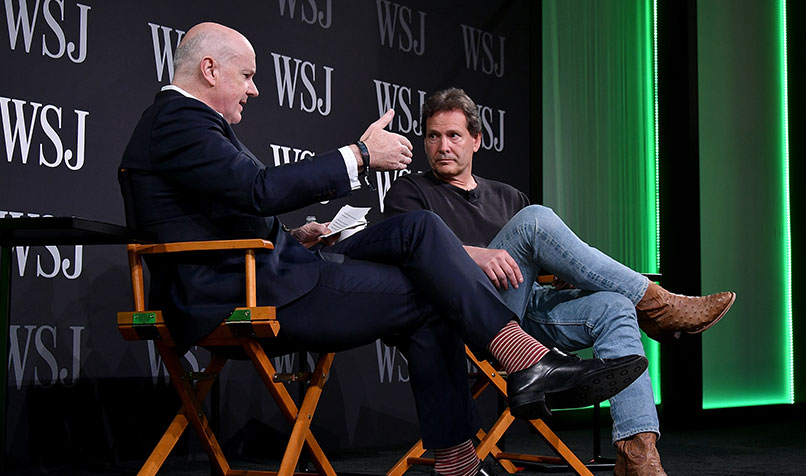
Built into PayPal’s high share price is the expectation that the company will figure out a way to turn Venmo’s popularity into profit. Third Point’s letter predicted that the app will be contributing US$1 billion in additional annual revenue within three years.
Disagreements over how to do that, or how much to even try, have led to the departures of two Venmo heads in two years. Employees who have left in recent months describe mounting mutual frustration.
According to multiple people familiar with the company’s finances, the app is still losing hundreds of millions of dollars annually. In an interview after the announcement of Venmo’s latest leadership change in late September, Schulman’s deputy, PayPal chief operating officer Bill Ready, downplayed any suggestion of turmoil.
“Any start-up that goes through rapid growth is going to experience this,” he says. “You evolve, and you have to bring in different skill sets for each stage of the journey.”
Days earlier, at PayPal’s New York office, Schulman had likened the relationship between Venmo and its parent company to that of Instagram and Facebook. Zuckerberg’s purchase of the popular photo-sharing app has long been seen in Silicon Valley as the standard by which tech acquisitions should be judged.
Instagram brought Facebook legions of new users and an infusion of talent; Facebook in turn allowed Instagram’s founders to continue to run the service the way they wanted to.
A week after that conversation, as Venmo was announcing its latest leadership change, Instagram’s two founders abruptly resigned from Facebook amid reports of their frustration with Zuckerberg’s increasingly heavy hand.
Schulman says he’s interested in continuing to make big acquisitions in the coming years – the company has amassed a US$10.5 billion cash hoard to spend. It’s all the more imperative, then, that it keeps getting along not only with its powerful new partners, but also with itself.
For better or worse, the American payments business remains deeply fragmented – banks, processors, and card networks all control a piece of the electronic daisy chain along which credit card transactions pass – and as a result the parties involved remain co-dependent, relying on one another even as they explore additional lines of business that have the potential to make each other superfluous.
Schulman believes there’s plenty to go around. Like others in the digital payments business, he describes the potential market as not just online commerce, but all commerce.
There are stores in China, he points out, where you simply go in, put what you want in your pocket, and walk out. Amazon has introduced similar stores in the US. No shopping cart, no check-out, just your phone and a lot of tracking. Is that online or offline?
All of human commerce, it goes without saying, adds up to a very big market.
“It’s tens of trillions if not a hundred trillion,” Schulman says. “There’s a lot of room for a lot of companies to be very successful, and there isn’t going to be one company that does all of this. That’s never been the case in the history of the world.” In such a future, no one will have to fight, except, of course, as a hobby.
